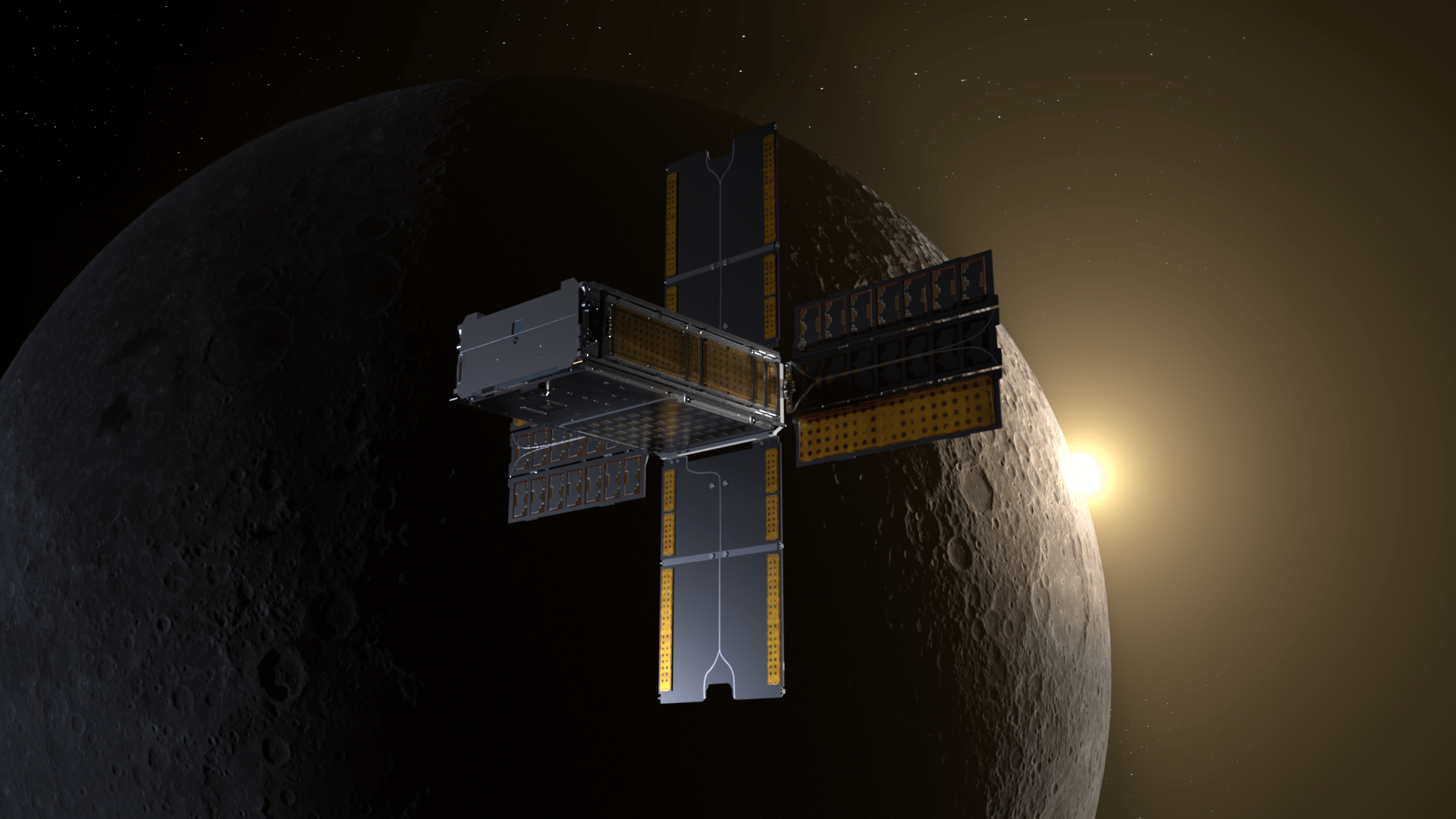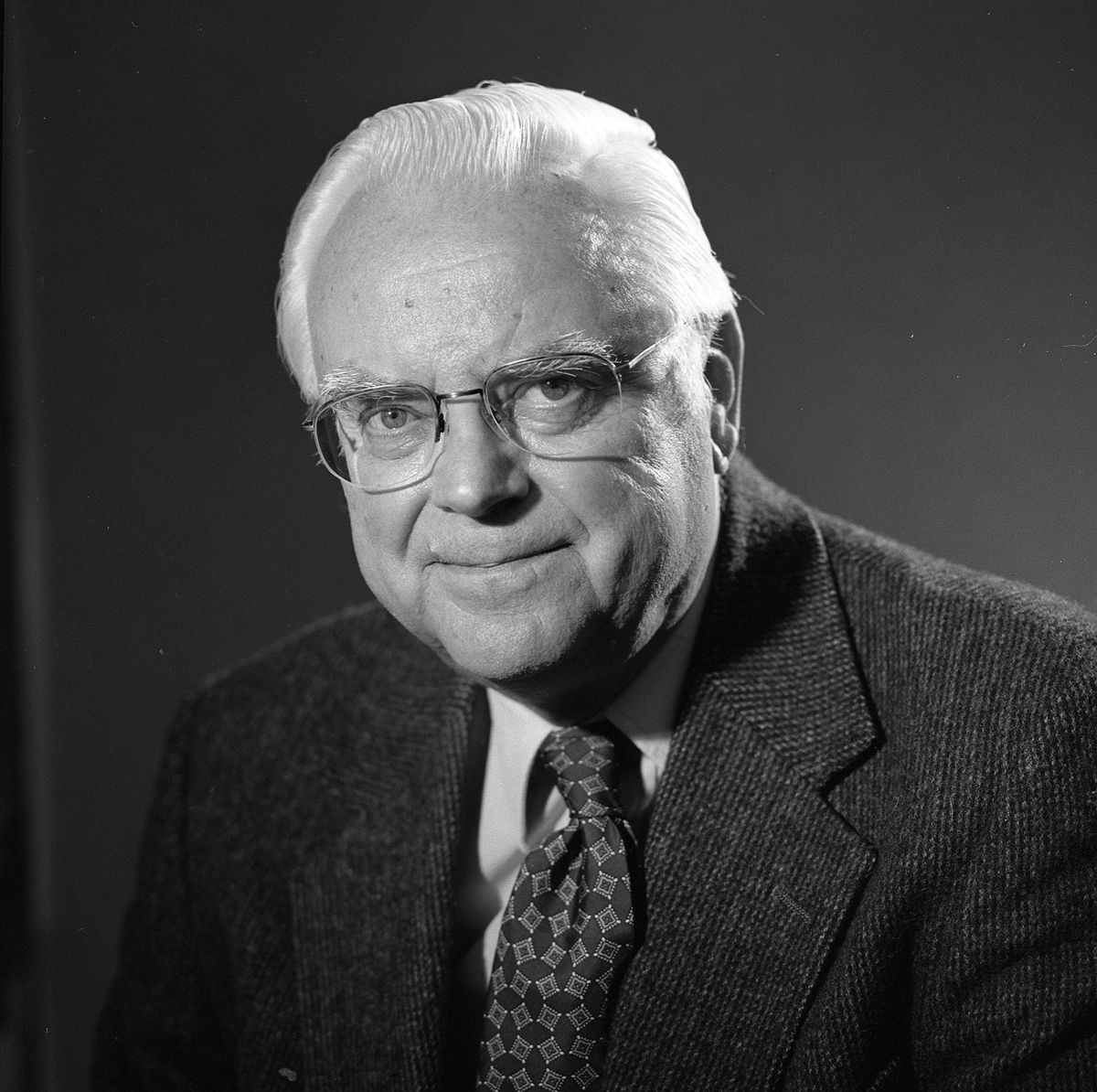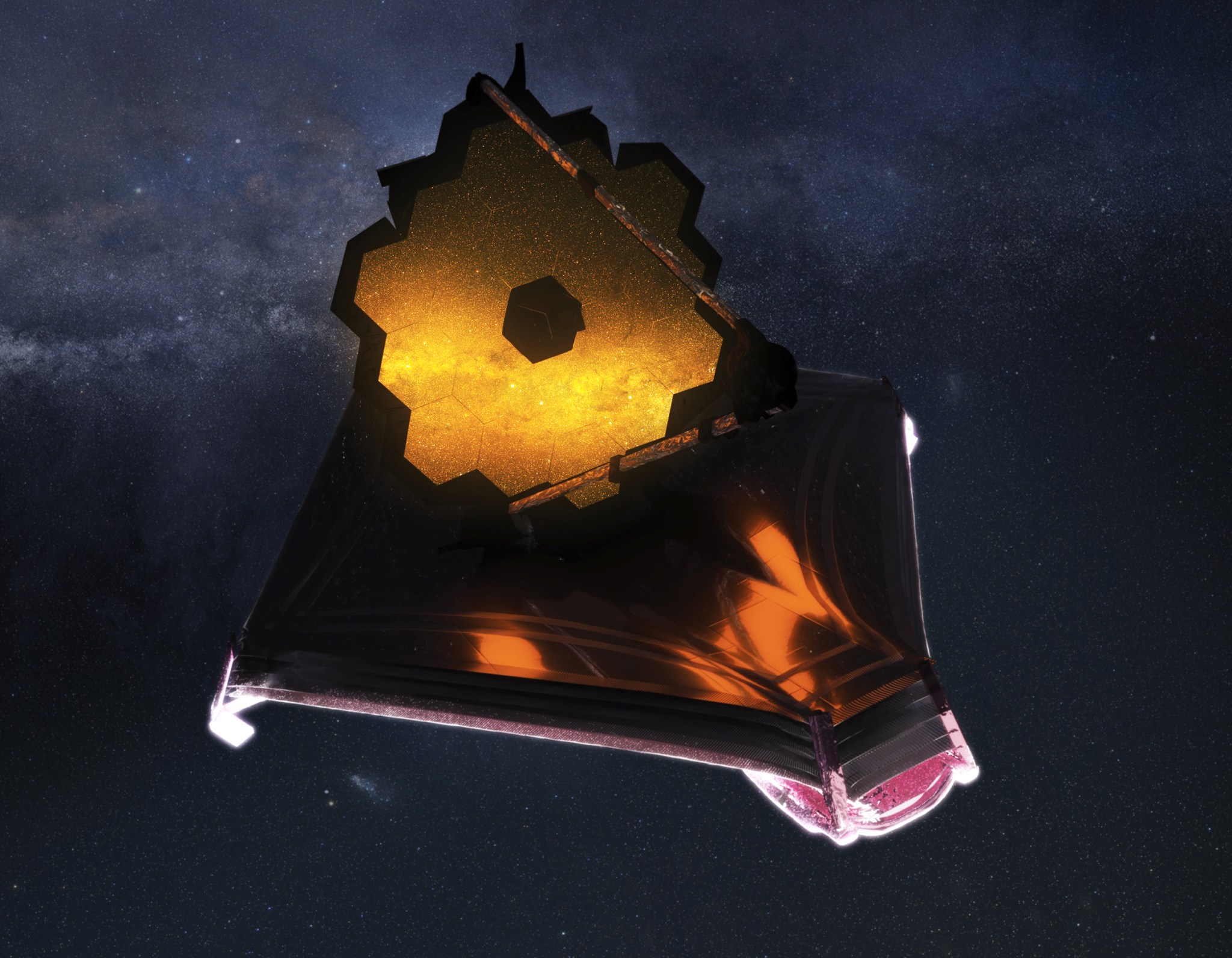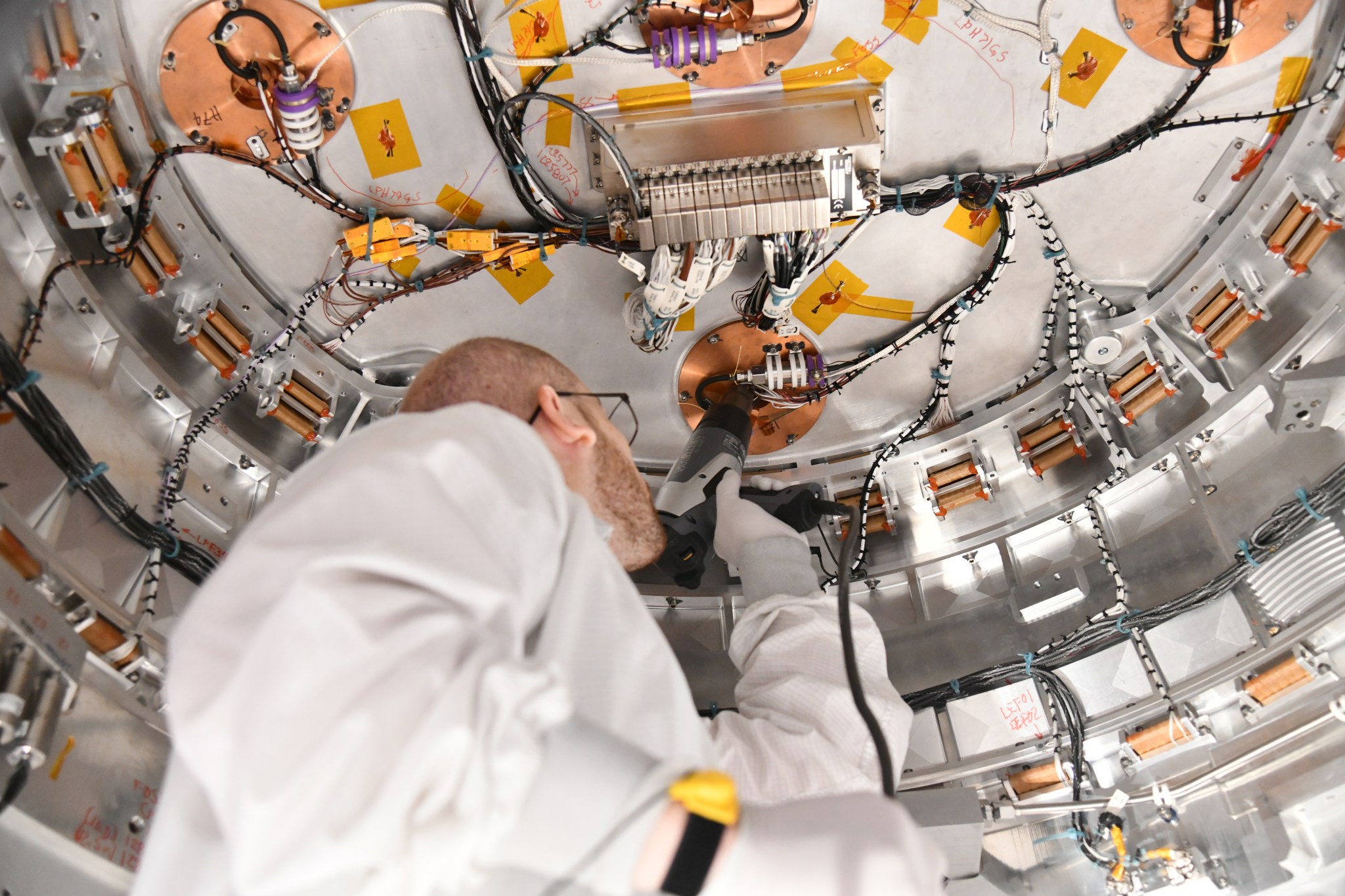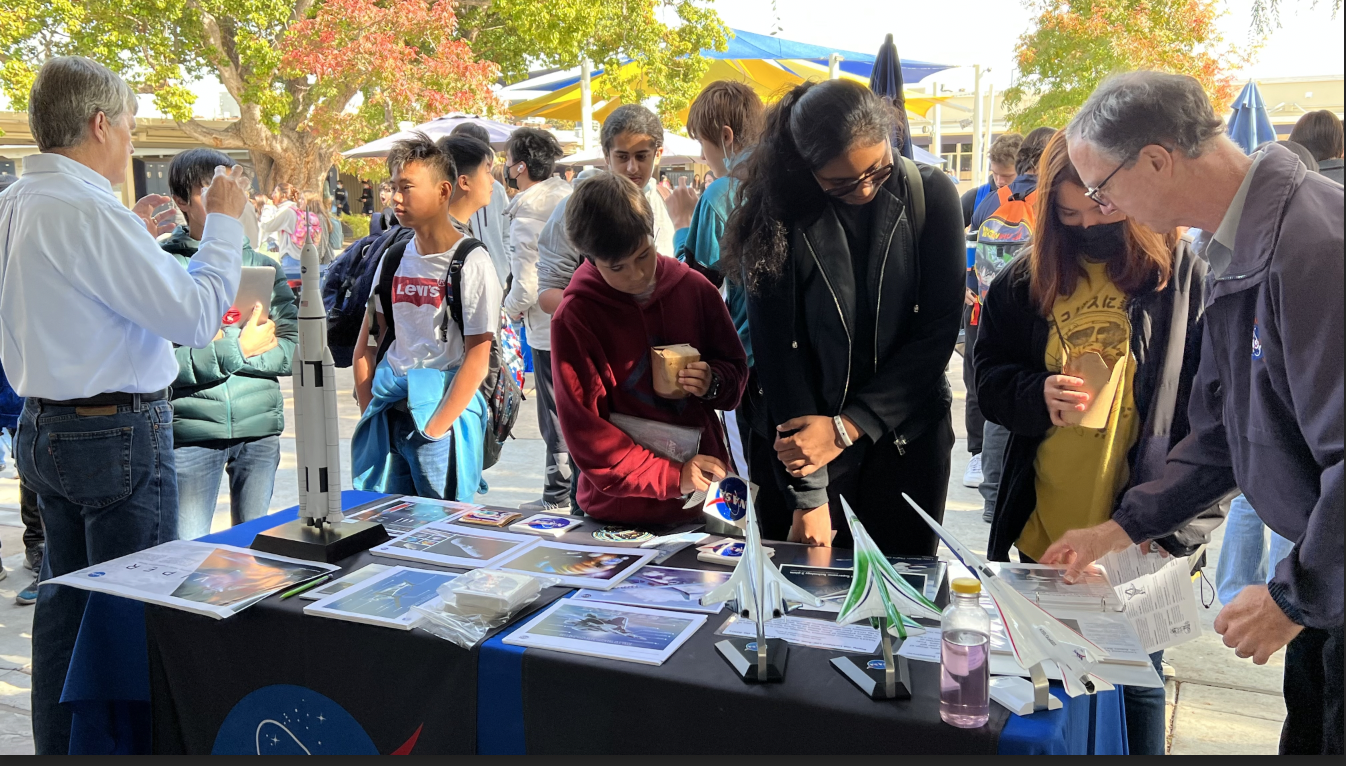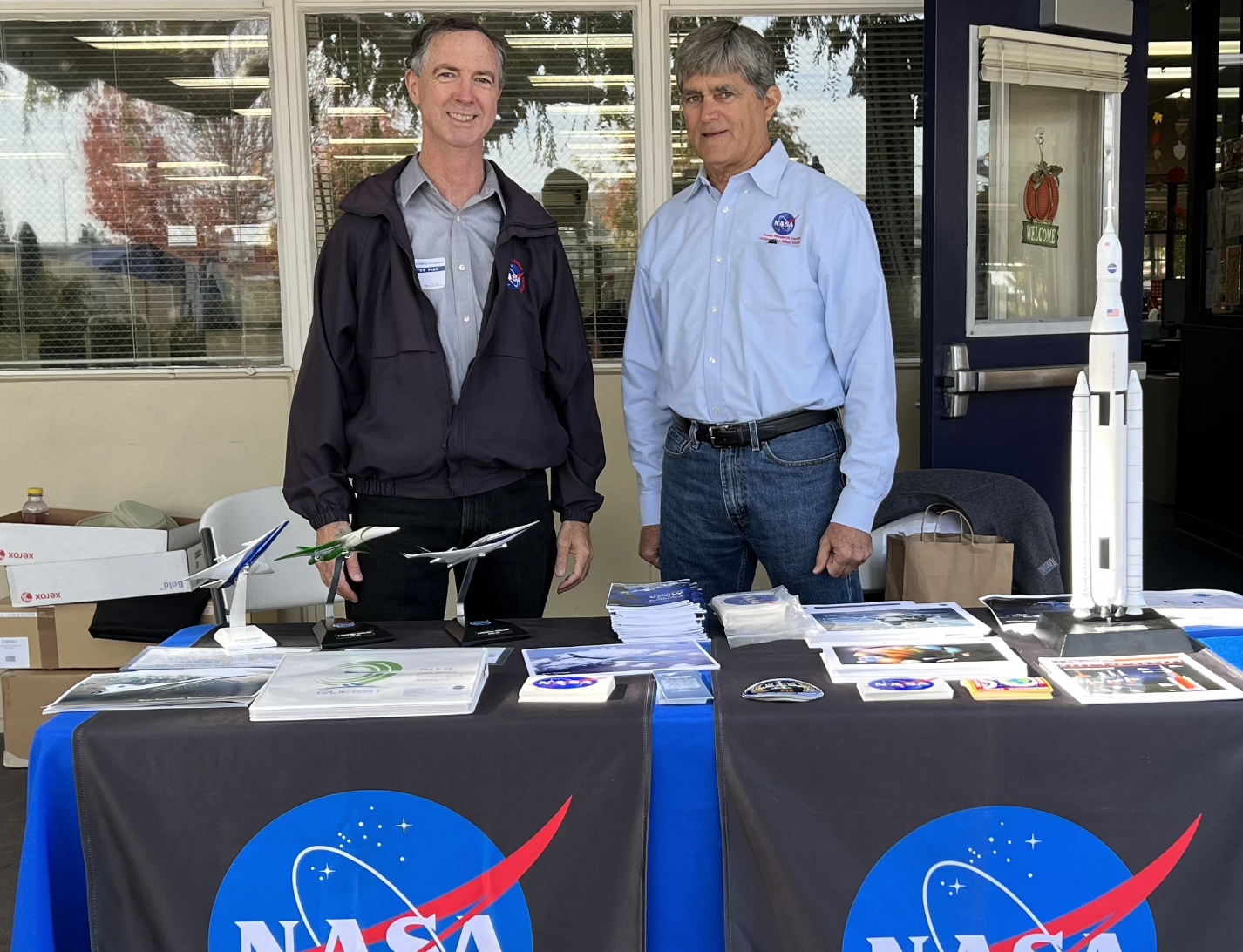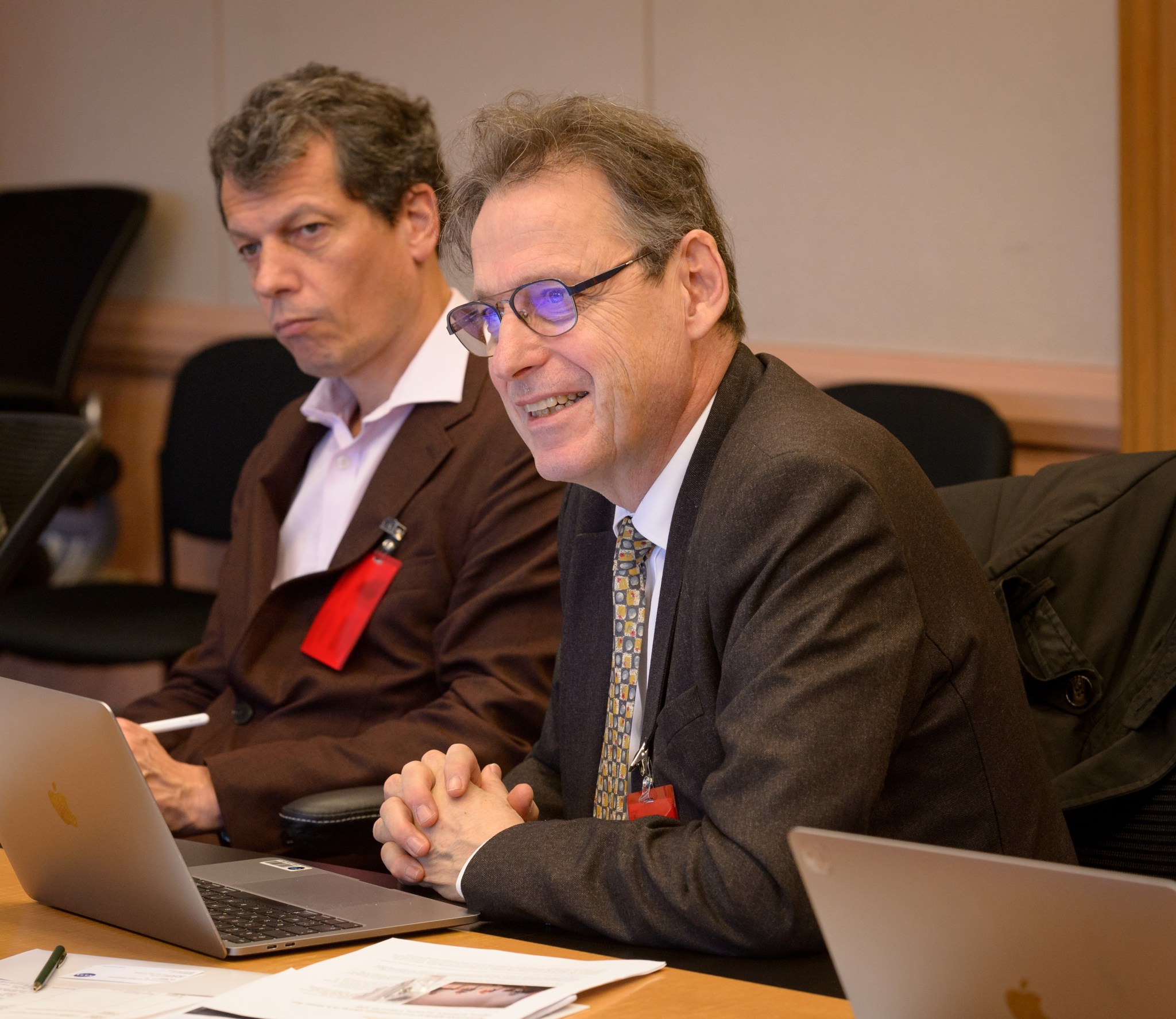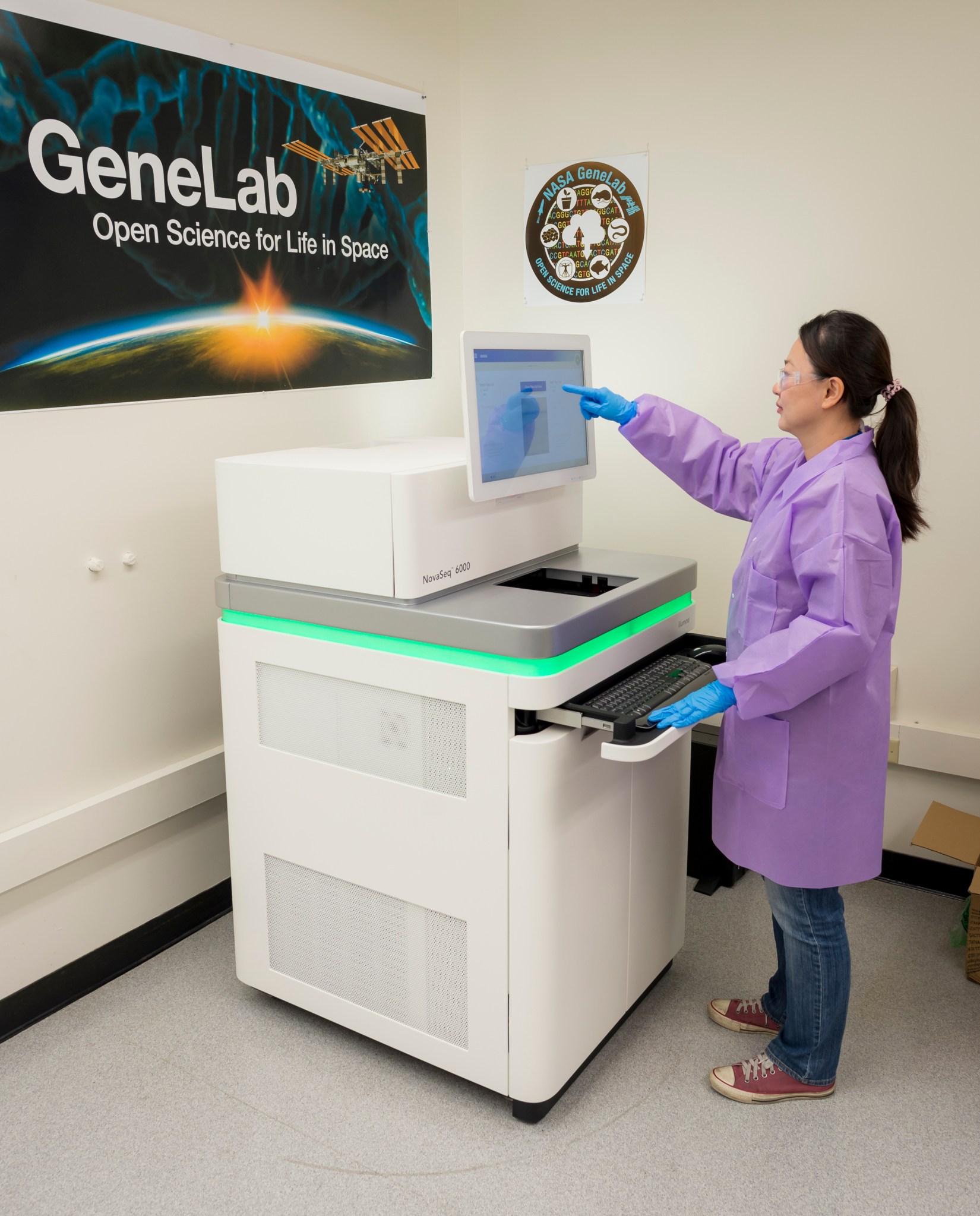BioSentinel Underway After Successful Lunar Flyby
NASA’s BioSentinel – a shoebox-sized CubeSat – is travelling far from Earth. But that also means it’s closer than ever to being the first long-duration biology experiment in deep space. BioSentinel’s mission operations team successfully acquired signal from the spacecraft shortly after launch on Nov. 16, 2022 and it is currently operating as expected.
BioSentinel, one of the 10 CubeSats that launched aboard Artemis I and subsequently deployed into deep space, will study the impacts of space radiation on yeast farther in deep space than ever before. Artemis missions at the Moon will prepare humans to travel on increasingly farther and longer-duration missions to destinations like Mars, and BioSentinel will carry microorganisms, in the form of yeast, to fill critical gaps in knowledge about the health risks in deep space posed by space radiation.
Upon initially receiving telemetry from the spacecraft at about 4 a.m. PST Nov. 16, health and status data indicated the spacecraft was tumbling, and the team worked with the Deep Space Network to send commands and resolve the anomaly.
“The team requested and received an emergency pass from the Deep Space Network to attempt a command to detumble the spacecraft,” said Matt Napoli, BioSentinel project manager at NASA’s Ames Research Center in California’s Silicon Valley, where the spacecraft was built and is managed. “The team then sent the spacecraft a command to perform a momentum management sequence, or detumble. A couple tense hours later, at 8:05 a.m. PST the team received telemetry showing the detumble was successful.”
Since then, the spacecraft has remained stable and has continued to perform its mission milestones, as planned. This includes its successful lunar flyby on Nov. 22, 2022, when BioSentinel passed approximately 250 miles above the Moon’s surface. And shortly after that, it successfully reemerged from 36 minutes of darkness, while the spacecraft was eclipsed by Moon. It is again pointing its solar panels at the Sun and recharging its batteries in preparation for the start of its experiment, which is expected to begin next month.
“We’re excited to see how the yeast are doing once the experiment begins and we receive the first science data downlink from the spacecraft,” said Napoli.
Commemorating the Anniversary of the Drake Equation
by Frank Tavares
On Nov. 1, 1961, astronomer and astrophysicist Dr. Frank Drake formulated an equation that would forever change the way scientists approach the question of whether or not humanity is alone in the universe–the Drake Equation. By creating a math problem with variables related to the probabilities of the various conditions needed for life, Drake created a way to estimate how many extraterrestrial civilizations capable of communication could exist within our galaxy.
Drake passed away Sept. 2, 2022, at the age of 92, leaving a legacy that changed the way scientists consider the possibilities for life beyond Earth and how to search for it. On the anniversary of the Drake Equation, some astronomers and astrobiologists who currently or previously worked at NASA’s Ames Research Center in California’s Silicon Valley shared their reflections on Drake’s life, how the Drake Equation inspired and influenced their work, and what’s next in the search for life beyond Earth.
Penelope Boston is an astrobiologist and associate director for Science Business Development at Ames, and previously was the director of the NASA Astrobiology Institute.
Melissa Kirven-Brooks is an astrobiologist and the NASA Astrobiology Program and the Deputy Chief of the Exobiology Branch at Ames.
Thomas Roellig is an astrophysicist at Ames and previously served as Chief of the Astrophysics Branch.
William Borucki is a space scientist and was the primary investigator for NASA’s Kepler Space Telescope, which discovered there are more planets than stars in our galaxy.
When did you first learn about the Drake Equation, and how did it influence or inspire your career?
Penelope Boston: When I was eight years old, I saw an article in a kid newspaper. The article was by Frank Drake about the Drake Equation. Already a science fiction reader, I was instantly aflame with the idea that something as exciting as whether there were intelligent beings elsewhere in the universe could be analyzed systematically by looking at each factor in a mathematical equation. I had not yet hit algebra or calculus, but the magic of such a power of math hit me between the eyes. I was well and truly hooked on both simultaneously!
Thomas Roellig: I was actually a graduate student at Cornell University when Frank was a professor there. I first heard of the Drake Equation from him in one of his lectures in his “Introduction to Radio Astronomy” course. Frank was a very good lecturer, and the equation made a lot of sense to me at the time, although of course we did not know the values of many of the coefficients back then as well as we do now.
Melissa Kirven-Brooks: I think that I heard about the Drake Equation when I was in high school, and it impressed me in providing a highly accessible way to think about the probability of life elsewhere.
William Borucki: When I heard about the Drake Equation, I was delighted to see the change from vague speculations about the extent of life in our universe replaced with a set of individual factors that could be investigated and measured.
Where do you see Dr. Frank Drake’s influence on the fields of astrobiology and astronomy?
Thomas Roellig: As an articulate and energetic speaker and writer, Frank Drake was an early leader in this field with a profound influence.
Bill Borucki: Frank Drake and his Equation have encouraged studies in astrophysics, astrobiology, and other science by pointing out the need for investigations in many areas of study such as the study of the habitability of various types of planets and planetary conditions that might allow life to flourish, extremophile life that exists on Earth, and the study of the longevity of civilizations.
Frank Drake was also instrumental in the formation of the SETI Institute that conducts the search for intelligent life by using large radio telescopes and optical systems. The SETI Institute scientists target the stars that have been identified by space missions as having planets and it has also contributed many of the scientists that made the Kepler Mission a success.
Penelope Boston: When Frank first began his work on SETI, it was not considered a legitimate area of study, but borderline crank stuff. The UFO craze of the early space age made the topic suspect. Frank’s steady and careful scientifically based work on the topic gradually helped to change such narrow-minded attitudes to the point that we are now seeing a relatively large number of scientists in both astronomy/astrophysics, astrobiology, and other fields engaged in the work.
Melissa Kirven-Brooks: The SETI Institute and the Berkeley SETI Research Center are definite offshoots of this work. By its nature to inspire discussion of extraterrestrial life, his equation started conversations amongst non-specialists and the general public that expanded thoughts and worldviews.
How did Dr. Frank Drake impact your personal or professional life?
Melissa Kirven-Brooks: Part of my interest in astrobiology arose from considering what type of technology would be required to determine some of the coefficients. I am a biologist but chose a graduate school with a strong engineering influence and eventually came to Ames to work on hardware development and testing for the International Space Station. I shifted to the NASA Astrobiology Institute in 2005 and have been indirectly supporting astrobiology research since then, now working for the NASA Astrobiology Program and the Deputy Chief of the Exobiology Branch.
Penelope Boston: I learned of his work when still a child. Later, as a scientist myself, I met Frank on a number of occasions at various meetings and discussed the latest SETI efforts as they arose. When I served on the NASA Innovative Advanced Concepts program external committee with Frank, I got to know him very much better, which was a treat! He was a calm, sensible, clever, and kind soul, a perfect example of how a highly driven and accomplished person can still be a wonderful human being.
What is the future of how the Drake Equation is studied and used?
Bill Borucki: Two factors in the Drake Equation are the fraction of stars that have planets and the fraction of planets that are in the habitable zone where life might be possible. The Kepler Mission and follow-on space missions show that there are many billions of such planets in our galaxy alone. Given those results and assumptions of modest values for the other factors, the Drake Equation suggests that the number of communicating civilizations could be substantial. Contact with such civilizations requires only continued technical progress and patience.
Thomas Roellig: Frank always stressed that the greatest unknown coefficient was “L” – the length of the time that a civilization could be detected remotely. With the dangers of nuclear war, global warming, and over-population we are conducting an experiment on that time length here and now on Earth.
Penelope Boston: The equation serves as a flagpole around which people can debate their science and attitudes towards the issues of other intelligences in our galaxy and how we might continue to look for evidence of their presence. The equation itself, has had several modifications over the years put forward by other thinkers, but at rock bottom it nailed all of the essential variables involved. Some of those variables have already been given approximate numerical values because of advances in science. Most notably, we now have a fairly good grasp of the likely number of total exoplanets to be expected in the Milky Way galaxy, and investigations into the distributions of planetary types are advancing steadily as our capabilities expand with James Webb Space Telescope (JWST) and future telescopic missions to come.
Melissa Kirven-Brooks: Perhaps with JWST now active, and other telescopes and instrumentation under development, we may have many more Drake Equation solutions in the next decade or two.
Dr. Frank Drake impacted these scientists and countless others across NASA, and the world. As the search for life beyond Earth continues at NASA, SETI, and other organizations, we celebrate the equation that started so much of this work and carry forward Dr. Drake’s legacy.
“Because of Drake’s work, humanity will always be a species that has reached beyond the confines of our stellar neighborhood,” said Eugene Tu, Ames’ center director, upon Dr. Drake’s passing. “In this way, his voice carries on — speaking on humanity’s behalf with humility and grace, giving us all a way to be heard in the cosmos.”
Climate Change Can Put More Insects at Risk for Extinction
A new analysis shows temperature fluctuations are an important factor in insect extinction risk
by Hillary Smith
New NASA research models are shedding light on how insect populations may respond to severe changes in temperature that are likely climate change. In a study recently published in Nature Climate Change, scientists found that 65% of the insect populations they examined could go extinct over the next century.
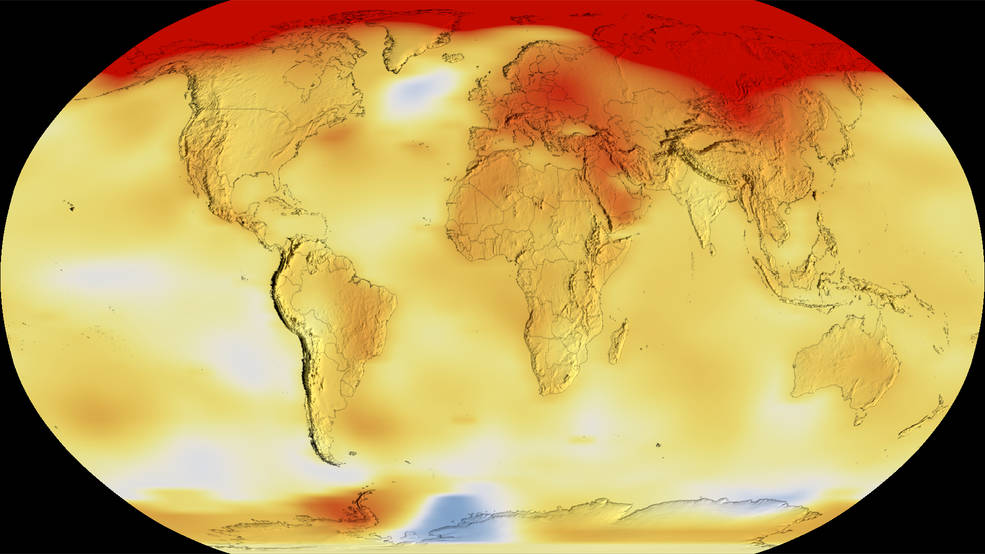
Insects perform many important roles in Earth’s ecosystems. They assist with the production of fruits, vegetables, and flowers through pollination. They decompose organic matter. They even help control harmful pests. But there are gaps in our understanding of how insects and ecosystems will respond to climate change.
“We needed a modeling tool to understand how insect populations will be affected by variations in temperature,” said Dr. Kate Duffy, a former postdoctoral researcher at NASA’s Ames Research Center in California’s Silicon Valley. “And that’s what we aimed to offer with this study: a more direct and accurate way for scientists to understand this dynamic.”
Duffy and other scientists used advanced models to explore how cold-blooded insect populations would respond to projected temperature changes over the next century. The research group found that 25 of 38 insect species they studied could face increased extinction risk over the next century, particularly due to dramatic and erratic temperature swings in their local environments.
Scientists expect climate change to negatively affect biological diversity — the amount of variation found in the genes, species, and ecosystems on Earth. Maintaining diversity is essential for human health, food security, clean air and water, and for millions of agricultural jobs worldwide. Understanding which species may be most at risk could allow conservationists to more accurately target efforts to combat losses of diversity.
Many previous studies have relied on the relationship between average temperatures and species health to inform statistical models of climate impacts on species attributes (such as their distribution or abundance). But such models can be misleading because the relationship between temperatures and species performance is complex — with many factors coming into play — and few models properly account for fluctuations in temperature.
To gain a more detailed view of how temperature changes will affect insect populations, Duffy and colleagues integrated climate projections from the World Climate Research Program, data about how insects perform at different temperatures, and mathematical models — what scientists call “dynamic modeling.” This approach is unique because it integrates climate projections with existing insect temperature response models to yield insect population projections. Previous studies provided insight into the growth rate of insect populations, but they haven’t before scaled models to the population level.
Their analysis showed that due to extreme changes in temperatures, 65 percent of the 38 populations studied could face an increased risk of extinction over next 50 to 100 years. Temperature changes are particularly threatening for cold-blooded insects because the creatures lack mechanisms to regulate their body temperature during drastic temperature swings.
“The ecological and data-driven models in this study could enable more accurate predictions of ecological response than we’ve ever had before and inform more targeted strategies for helping species adapt to climate change,” said Auroop Ganguly, a researcher at Northeastern University and a co-author on the paper.
This research was primarily funded by grants from the National Science Foundation, with additional support from the Department of Defense. Duffy led this study while supporting the NASA Earth Exchange team at Ames and while pursuing her doctorate at Northeastern University. She recently co-founded Zeus AI, a NASA Small Business Innovation Research-funded startup using machine learning for weather forecasting.
Equipping LOFTID’s Sensors for a Fiery Descent Back to Earth
by Frank Tavares
NASA has its sights set on sending humans to Mars in the coming decades and sending spacecraft even farther out in our solar system. These increasingly complex missions require more capable technologies to enable safe passage for cargo, complex payloads, and even people on the dangerous dash through a planet’s atmosphere to reach the surface.
To develop that capability, NASA’s Low-Earth Orbit Flight Test of an Inflatable Decelerator (LOFTID) mission will test a new heat shield designed to inflate to protect heavier payloads on the journey through an atmosphere. A heat shield protects a spacecraft during the fiery descent, where temperatures can reach levels up to half the temperature of the Sun’s surface. During LOFTID’s test mission, a suite of sensors on the re-entry vehicle will collect data to help researchers understand how it performed during the flight.
“The data is the star of the show,” said Greg Swanson, instrumentation lead for LOFTID at NASA’s Ames Research Center in California’s Silicon Valley. “Learning how this inflatable heat shield performs in these extreme conditions is exactly how we scale this technology up to one day take humans and their cargo to Mars.”
NASA’s Langley Research Center in Hampton, Virginia, leads the LOFTID mission, with contributions from other NASA centers. LOFTID’s instrumentation development, including designing, procuring, calibrating, and testing all of the sensors on the vehicle, is led by NASA Ames.
A Comprehensive Instrument Suite
LOFTID’s main goal is to demonstrate one of the most difficult parts of spaceflight, atmospheric entry, with a new piece of technology that may one day be used to protect humans on a trip to another world. During this demonstration mission, LOFTID’s suite of state-of-the-art sensors will monitor the vehicle’s experience and capture data in two recorders – one that will stay with the craft through splashdown and a backup that will eject from the craft during re-entry. Researchers and engineers will use that information to improve future designs.
Traversing through an atmosphere to land on another world or return to Earth from orbit takes a spacecraft to extreme speeds, generating a tremendous amount of heat due to both the convection of hot gas flowing around the spacecraft and the radiation created by the shockwave that forms. The spacecraft must withstand changes in pressure, heat rate, temperature, and more. The instruments on board must be able to account for all these shifting variables.
The instrument suite for LOFTID is comprehensive. Pressure sensors and strap loadcell pins will characterize the total force felt by the spacecraft. Total heat flux gauges measure energy transfer, capturing detailed readings across the body of the craft. A radiometer will measure the spacecraft’s exposure to radiation as a result of the gas ionization induced by the hypersonic shockwave. One hundred thermocouples will monitor temperatures all across the vehicle.
LOFTID will also use a parachute to break its fall into the Pacific Ocean and an “up look” camera installed at the top of the vehicle will capture launch vehicle separation and monitor parachute deployment for later review by the research team.
LOFTID’s instrumentation was developed through the partnership and expertise of multiple NASA centers across the country in addition to NASA Ames, including Langley Research Center, Marshall Spaceflight Center, and Armstrong Flight Research Center. These include GPS systems, experimental temperature sensors, specialized cameras, and more. The mission team designed a tailored package of instruments to collect ample data on LOFTID’s perilous journey, but they also needed to make sure the sensors would survive the trip themselves.
Testing and Calibrating for Extreme Temperatures
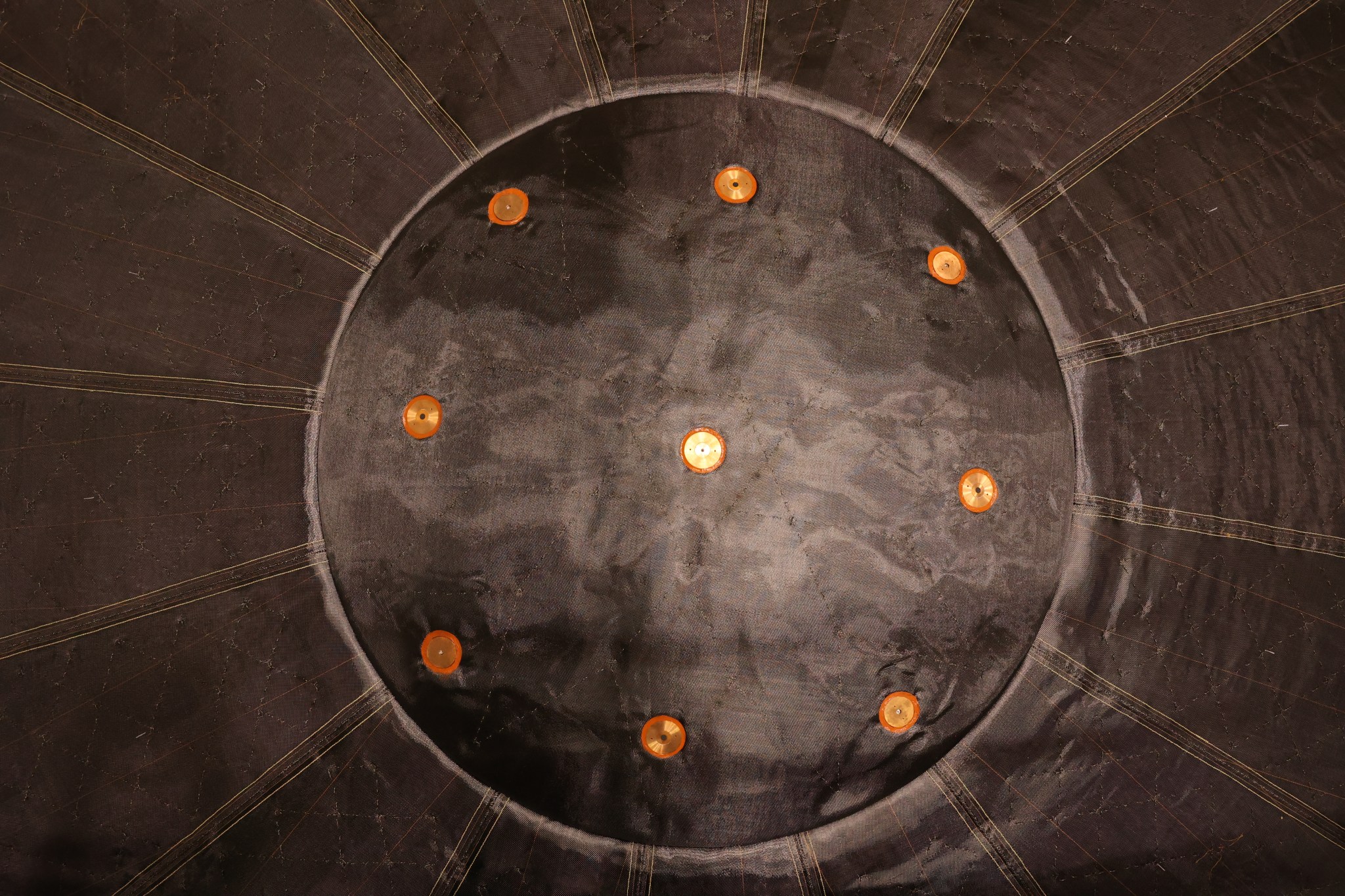
The LOFTID spacecraft is designed to withstand the dangerous journey through Earth’s atmosphere from low-Earth orbit, and the instruments on board have to be equally resilient. Researchers at Ames took the lead on testing and calibrating LOFTID’s instruments and found two concerns that were addressed prior to launch.
One was related to the radiometers and total heat flux gauges, which measure radiation and energy transfer. During testing, the Ames Sensors and TPS Advanced Research (STAR) Laboratories conducted calibration that indicated discrepancies in sensor readings and successfully re-calibrated the instruments with improved techniques for more accurate readings.
A second fix was related to the materials used for the 100 thermocouple sensors across the spacecraft. Early tests found that thermocouples in several key locations in LOFTID’s original configuration might not perform properly in expected flight environments. Using a tube furnace facility at Ames, a new configuration was developed. The performance of this new configuration was verified at conditions that replicate atmospheric re-entry via testing at the Boeing Large Core Arc Tunnel facility in St. Louis. This testing ensured the sensors could safely and accurately collect data on the trip.
“Bringing anything through an atmosphere from space is difficult, especially at this scale and on worlds like Mars, Titan, and Venus,” said Cole Kazemba, LOFTID aeroshell instrumentation lead at Ames. “But by doing what LOFTID’s doing now – collecting data, testing on the ground and then in flight, learning and scaling up – NASA is making sure that, when we’re ready, we’ll be able to safely land on our destinations near and far.”
The LOFTID project is managed and funded through NASA’s Technology Demonstration Missions program, part of the agency’s Space Technology Mission Directorate. The project is led by NASA’s Langley Research Center in Hampton, Virginia, in partnership with United Launch Alliance and with contributions from NASA’s Ames Research Center in Silicon Valley, Marshall Space Flight Center in Huntsville, Alabama, and Armstrong Flight Research Center in Edwards, California. NASA’s Launch Services Program, based at the agency’s Kennedy Space Center in Florida, is responsible for managing the launch service.
NASA and ULA dedicated the technology demonstration to the late Bernard Kutter. As ULA’s manager for advanced programs, Kutter was instrumental in developing the plan to test the system on an Atlas V rocket.
CAPSTONE Will Soon Meet the Crux of Its Deep Space Route to the Moon
by Gianine Figliozzi
On Nov. 13, CAPSTONE will reach the Moon and become the first spacecraft to enter into a unique, elongated orbit that will support NASA’s Artemis missions. This microwave oven-sized satellite, weighing just 55 pounds, will be the first CubeSat to fly to and operate at the Moon. The CubeSat serves as a pathfinder for Gateway, a Moon-orbiting space station that is part of NASA’s Artemis program. CAPSTONE’s mission will help reduce risk for future spacecraft, including Orion, by validating innovative navigation technologies and verifying the dynamics of a type of orbit that has never been flown before.
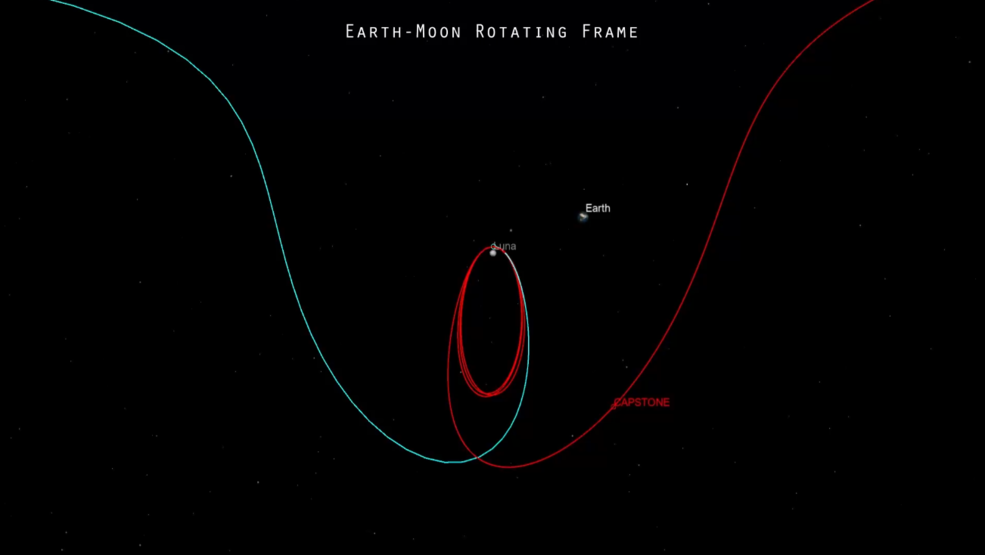
In this special orbit – formally known as a near rectilinear halo orbit (NRHO) – the pull of gravity from Earth and the Moon interact to allow for a semi-stable orbit. There, physics does most of the work of keeping spacecraft in orbit at the Moon, reducing the need for spacecraft to use fuel to maintain the NRHO compared to other similar orbits. NASA has big plans for this unique type of orbit. Engineers expect it will allow them to park bigger spacecraft – including Gateway – in orbit at the Moon for at least 15 years. Fuel efficiency for such long-duration missions is key.
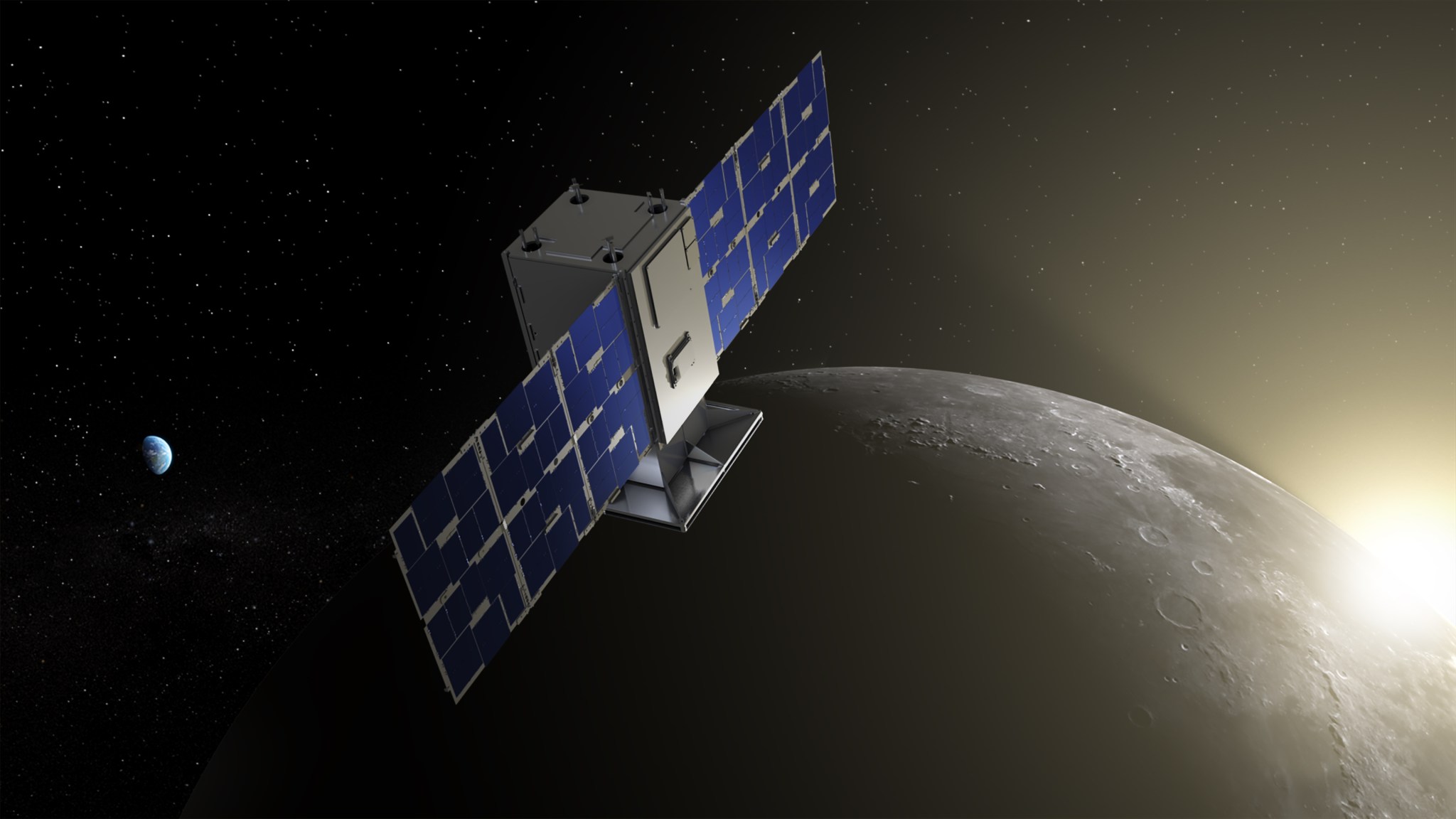
Over the past four months, CAPSTONE – short for the Cislunar Autonomous Positioning System Technology Operations and Navigation Experiment – has been navigating an unusual yet efficient deep space route to the Moon. This route – called a ballistic lunar transfer – follows gravitational contours in deep space and allows spacecraft to reach their destination expending little energy. The trajectory was designed by Advanced Space, a Colorado small business that owns and operates CAPSTONE on behalf of NASA.
CAPSTONE has performed five maneuvers over the past few months to line up its trajectory for orbit insertion, with the team adapting to unexpected challenges to keep CAPSTONE on track. A final maneuver on Oct. 27 teed up the spacecraft’s arrival to the Moon.
“What this CAPSTONE team has overcome to date has been incredible, showing resilience while gaining valuable knowledge. We are grateful to the exceptional individuals who have gone above and beyond in NASA, Terran Orbital, Stellar Exploration, NASA’s Deep Space Network and Advanced Space for their tireless work on recovery efforts,” said Bradley Cheetham, principal investigator for CAPSTONE and chief executive officer of Advanced Space. “Overcoming challenges is the purpose of a pathfinding mission – CAPSTONE is capitalizing on that objective.”
When CAPSTONE reaches the end of its gravity-driven track and arrives at the Moon, its approach will be perfectly aligned for NRHO insertion – the critical point of its route. Though the schedule of CAPSTONE’s prior maneuvers was flexible based on the spacecraft’s performance and other factors, this orbit insertion must take place at exactly the right time to put CAPSTONE in the correct orbit. While traveling 3,800 miles per hour, it will perform its delicate, precisely timed propulsive maneuver to enter orbit, like a flying trapeze artist who jumps from one arc to another with a decisive, acrobatic motion.
The initial orbit insertion maneuver is planned for Sunday, Nov. 13, at 6:48 p.m. EST. The CAPSTONE team expects it will take at least five days to analyze data, perform two clean-up maneuvers, and confirm successful insertion into the near rectilinear halo orbit.
Beyond that, other goals still lay ahead for this pathfinder CubeSat. Once in lunar orbit, CAPSTONE is scheduled to fire its thrusters once every six-and-a-half days, if needed, to stay on its orbit for at least six months, allowing NASA and its partners to understand how to operate in this unique orbit. Specifically, CAPSTONE will validate the propulsion requirements for maintaining its orbit as predicted by models, reducing logistical uncertainties for future spacecraft.
Additionally, a key software technology – the Cislunar Autonomous Positioning System (CAPS) – will be tested in the coming months. CAPS will demonstrate innovative spacecraft-to-spacecraft navigation solutions that will allow future spacecraft to determine their location without having to rely exclusively on tracking from Earth. CAPSTONE will do this by communicating directly with NASA’s Lunar Reconnaissance Orbiter – which has been in orbit around the Moon since 2009 – to determine its own position in space. This capability could enable future spacecraft to perform on their own with less support from the ground and allow ground-based antennas to prioritize valuable science data over more routine operational tracking.
CAPSTONE’s mission will demonstrate multiple technologies that will lay a foundation for commercial support of future lunar operations. NASA partners are testing cutting-edge tools for mission planning and operations, paving the way and expanding opportunities for small and more affordable space and exploration missions to the Moon, Mars, and other destinations throughout the solar system.
CAPSTONE is commercially owned and operated by Advanced Space in Westminster, Colorado. It represents an innovative collaboration between NASA and industry to provide rapid results and feedback to inform future exploration and science missions. The spacecraft was designed and built by Terran Orbital. Operations are performed jointly by teams at Advanced Space and Terran Orbital.
NASA’s Small Spacecraft Technology program within the agency’s Space Technology Mission Directorate (STMD) funds the demonstration mission. The program is based at NASA’s Ames Research Center in California’s Silicon Valley. The development of CAPSTONE’s navigation technology is supported by NASA’s Small Business Innovation Research and Small Business Technology Transfer (SBIR/STTR) program, also within STMD. The Artemis Campaign Development Division within NASA’s Exploration Systems Development Mission Directorate funded the launch and supports mission operations.
Crowds of Students Inspired at Ames Exhibit During Kings Academy Job Fair
Don Durston (Aerospace Engineer) and Frank Kmak (retired; former Ames Wind Tunnel Division Chief) represented NASA at the Government Service Fair at The King’s Academy (https://www.tka.org/) in Sunnyvale, on November 11. Government agencies were at the school for a lunch-time job fair to get the students interested in the military services and NASA. The military services represented were the Air Force, Marines, Army, Navy, Air National Guard, and Coast Guard. Don and Frank brought models of the SLS rocket, X-59, and the Boeing and Lockheed N+2 supersonic transport concepts and had lots of lithographs and NASA stickers to give out as handouts, courtesy of our Ames exhibit staff. The exhibit table continually had a crowd of students checking out the exhibit information and handouts for the hour that they were there. Students also spoke with the both of them about the work they do at NASA Ames. Some of the students expressed strong interest in working for NASA, which was an added bonus, and also showed the positive impact having such exhibits at schools and other public events has on kids.
Don Durston (left) and Frank Kmak (right) represented NASA at the Government Service Fair at The King’s Academy on November 11 (bottom photo) and explain NASA aeronautics and space projects to the students at the event (top photo).
French National Center for Scientific Research Deputy CEO Visits Ames
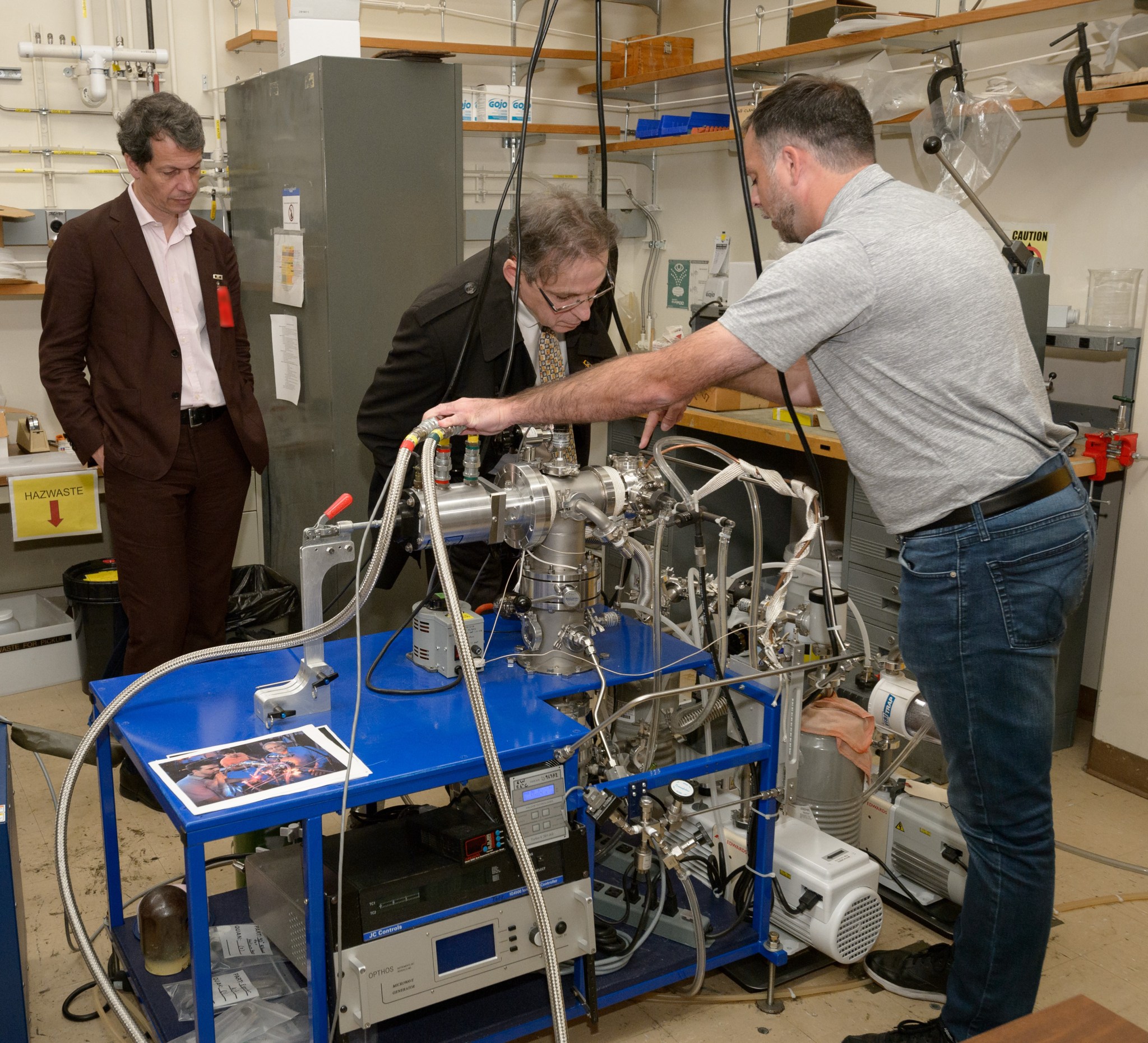
Five Ways Supercomputing is Key to NASA Mission Success
by Jill Dunbar and Michelle Moyer
Whether developing new technologies for landing on other planets, improving air travel here at home, or more realistically simulating global weather and climate, supercomputing is key to the success of NASA missions. These advances and more were on display in the agency’s hybrid exhibit during SC22, the International Conference for High Performance Computing, Networking, Storage and Analysis:
1. Designing safe, efficient air taxis.
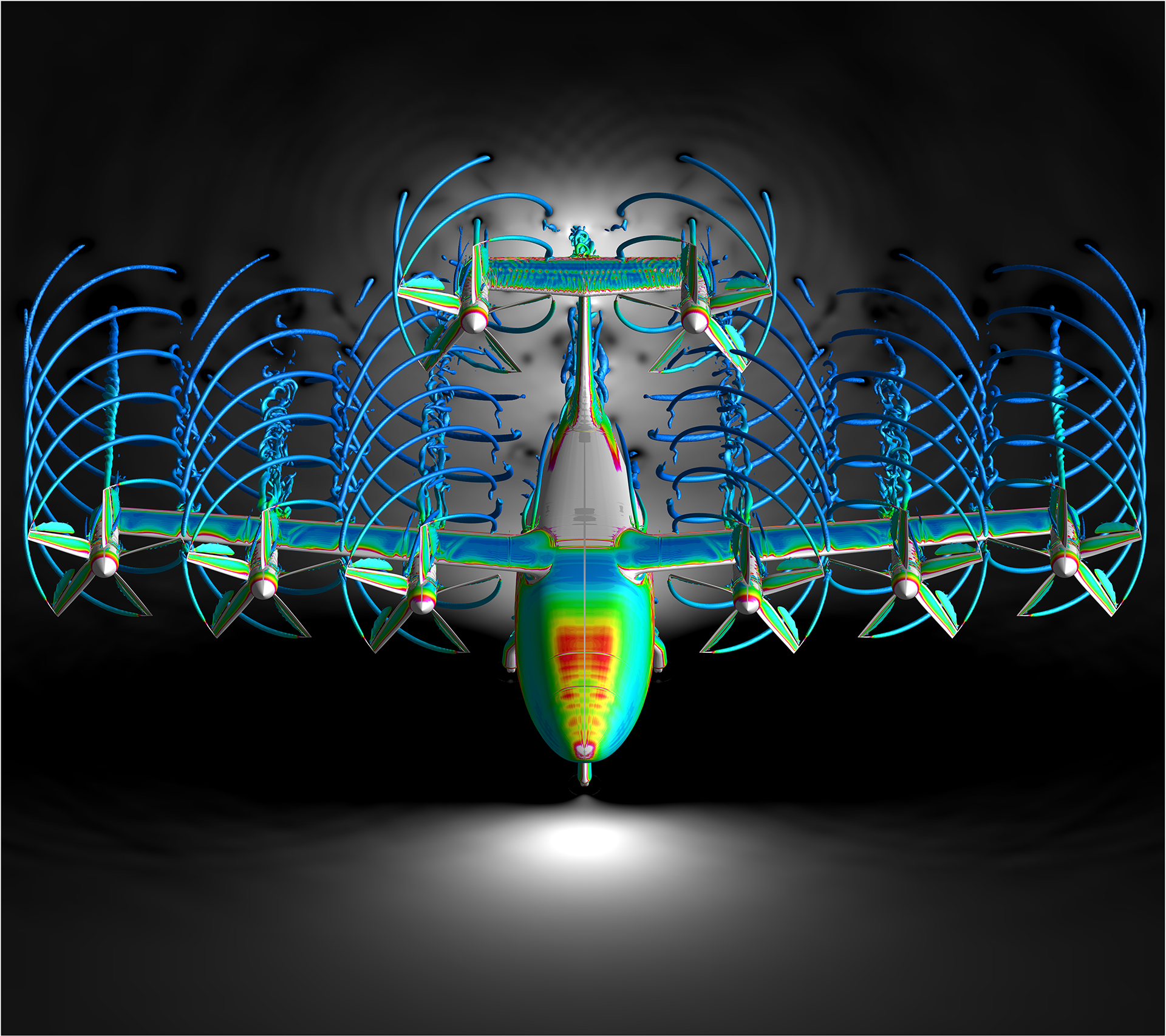
Using NASA’s powerful supercomputers, researchers are simulating the aerodynamic performance of several promising air taxi vehicle configurations that will someday carry passengers and cargo in urban and suburban areas. The highly complex simulations will be used to help design and develop these future air taxis—also called Advanced Air Mobility (AAM) vehicles—that will be safe, quiet, and efficient.
NASA plays an important role in the development of AAM by identifying key research areas and conceptualizing the design of AAM vehicles. Recent simulations focus on the performance of tiltwing and quiet single-main rotor AAM concept vehicles. Simulations were carried out on the supercomputers, such as Aitken, at the NASA Advanced Supercomputing (NAS) facility at the agency’s Ames Research Center in California’s Silicon Valley, which allowed such complex simulations to be solved in just a few days. Understanding the complex flow structures in these rotary-wing aircraft is key to reaching AAM performance and noise-level goals.
2. Keeping planetary rovers safe during risky landings.
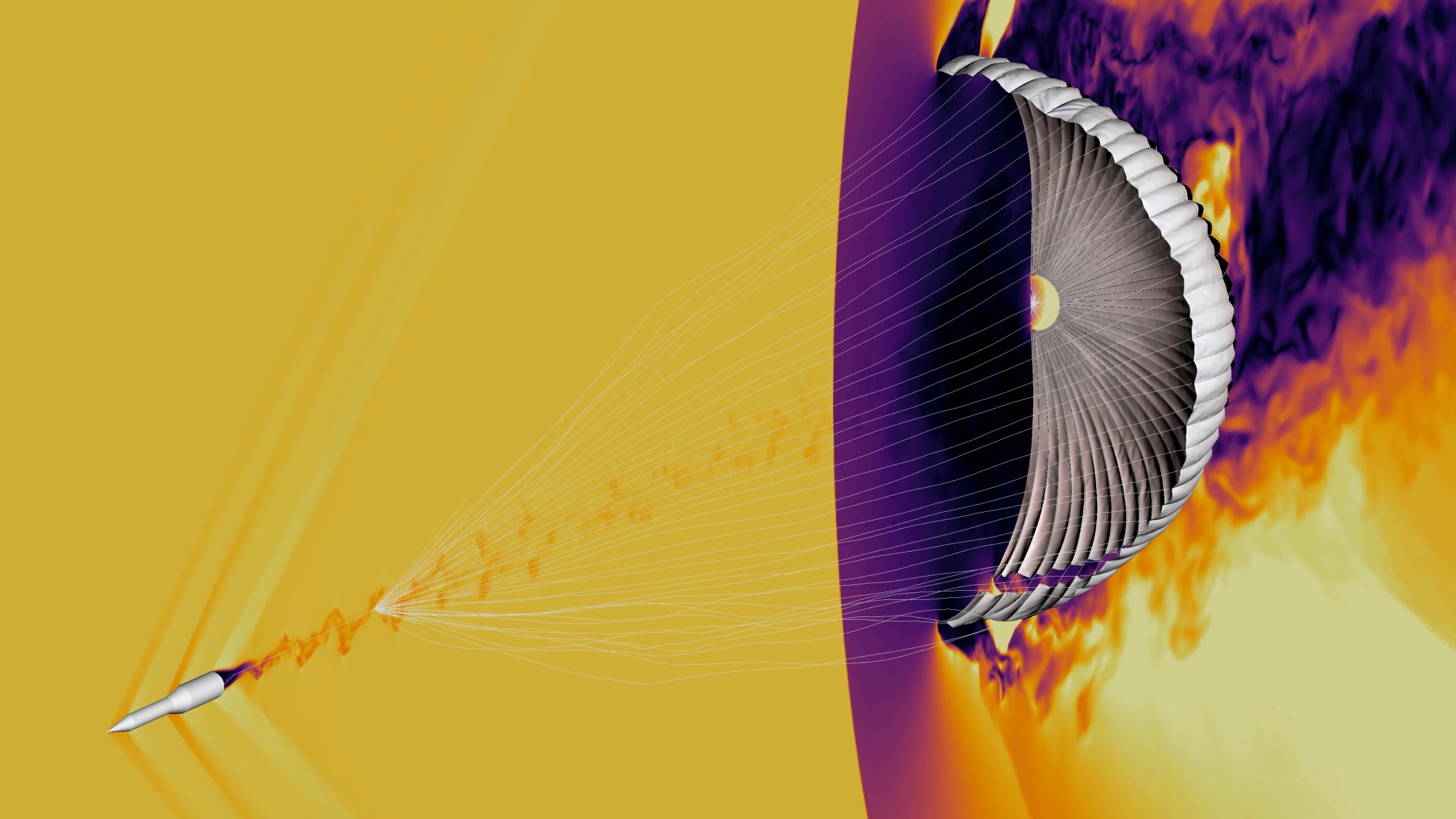
The entry, descent, and landing (EDL) sequence for NASA’s Mars landers has infamously been called the “seven minutes of terror,” because hundreds of critical events need to happen successfully—without intervention from Earth, due to the signal lag between the two planets. Roughly four minutes into descent, the spacecraft deploys a parachute that must inflate as evenly as possible, despite a wake of turbulent air, and without any rips or tears to the tightly woven fabric. This is one of the riskiest aspects of EDL and is notoriously challenging to predict.
Using the agency’s Aitken supercomputer, engineers at Ames are developing the capability to reduce risk and cost by simulating and analyzing many scenarios of supersonic parachute inflation, which would be too costly to study using flight tests. Another advantage to simulations is that fine-scale details can be extracted —that information can help engineers develop next-generation EDL systems able to handle the heavier payloads of future robotic Mars missions, like Mars Sample Return.
3. Modeling spacecraft heat shield materials at the microscale.
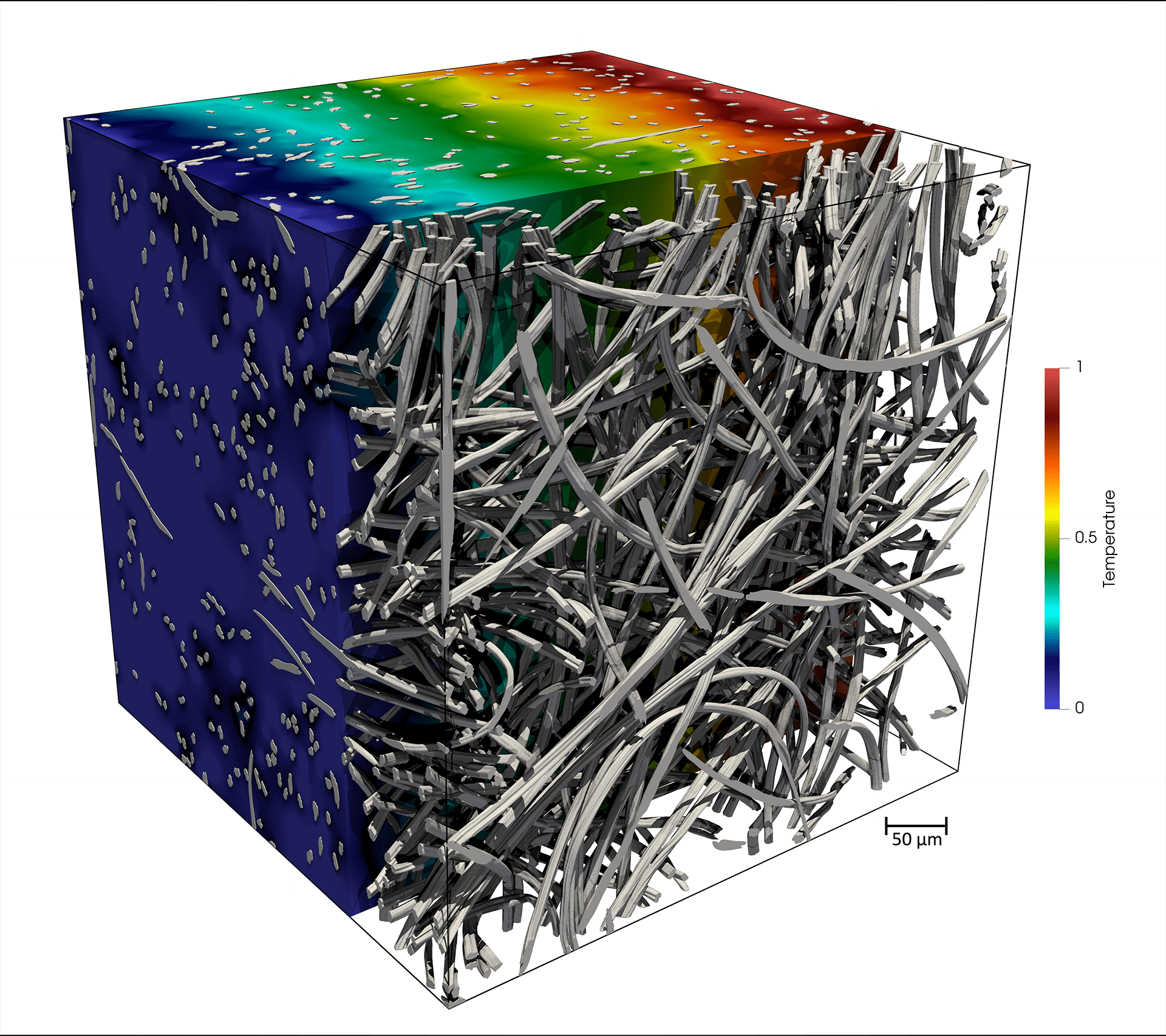
NASA’s Porous Microstructure Analysis (PuMA) software uses
X-ray microtomography to generate high-resolution 3D images of a material’s inner structure. PuMA, developed at Ames, provides unprecedented insights into materials used in heat shields for spacecraft, supersonic parachutes, and for meteorite analysis. NASA researchers use PuMA to develop new thermal protection system (TPS) materials for future space missions, and NASA’s high-performance supercomputers provide material scientists with the ability to run full-scale modeling on a material’s microstructure. This helps ensure the safety of future spacecraft, especially during the dangerous descent phase.
While this open-source software was originally created as a tool to predict material properties for TPS for spacecraft, PuMA has expanded to provide scientists the ability to combine material generation – from simple shapes to complex fibrous woven geometries – with studies of the material’s performance, such as its conductivity, elasticity, permeability, and even the way it oxidizes.
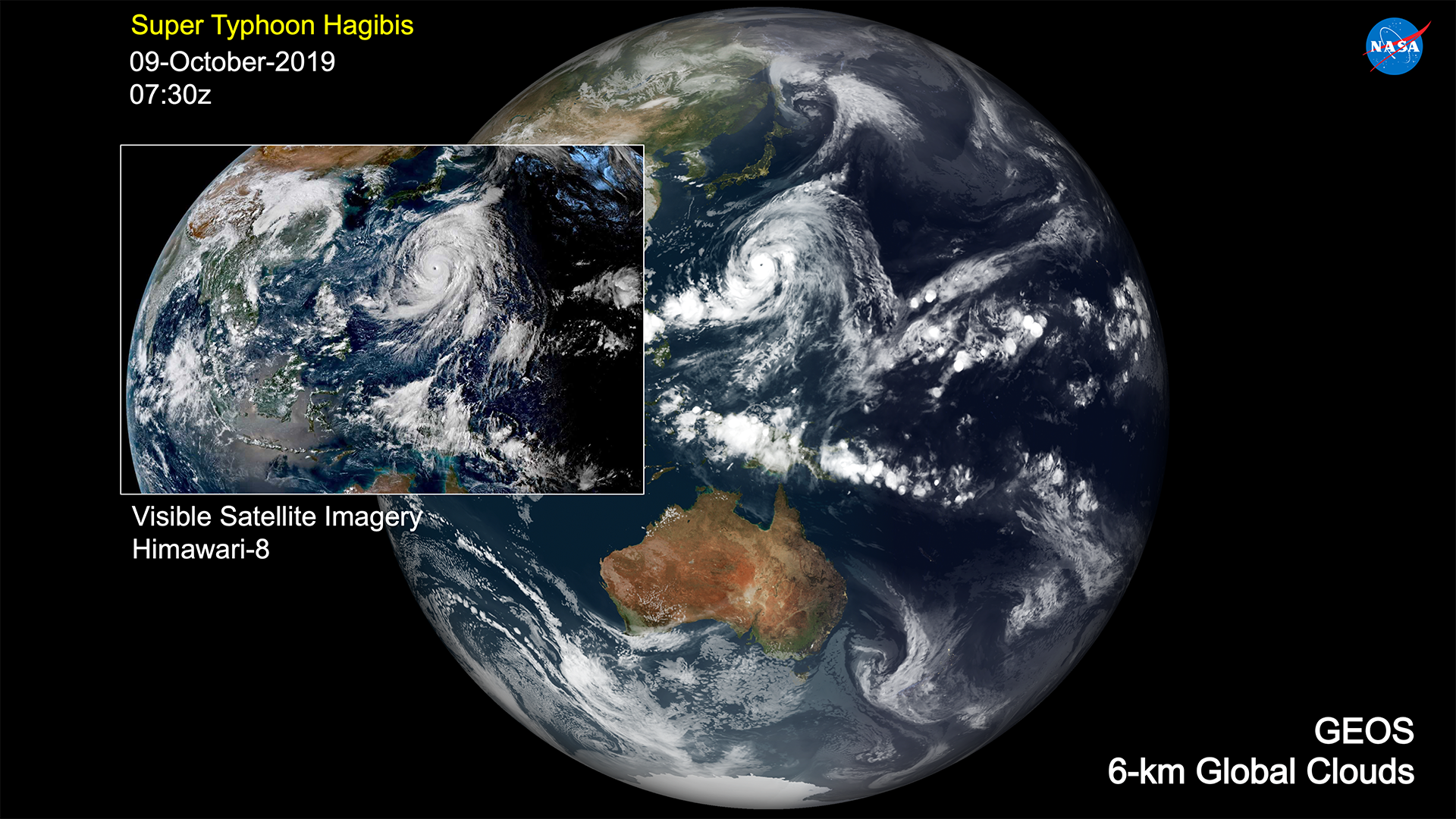
NASA is pushing the edge of modeling capability with the creation of a 1.5 kilometer (about 1 mile) resolution, global digital twin of Earth using supercomputers. The Global Modeling and Assimilation Office at NASA’s Goddard Space Flight Center in Greenbelt, Maryland, is using historical observational data to simulate the Earth system’s weather and climate. The NASA Global Earth Observing System (GEOS) model and assimilation system is the agency’s flagship system for enhancing the use of NASA’s extensive Earth observations.
With the vast expansion of machine learning capabilities and improved programming paradigms for super-fast graphics processing units, GEOS is now poised to provide an experimental framework within NASA for weather and climate studies. The GEOS model will have a range of capabilities including coupled ocean-atmosphere Earth system modeling, advanced studies of carbon emission, and transport at ultra-high resolutions.
5. Exploring the past, present, and future of planets inside and outside our solar system.
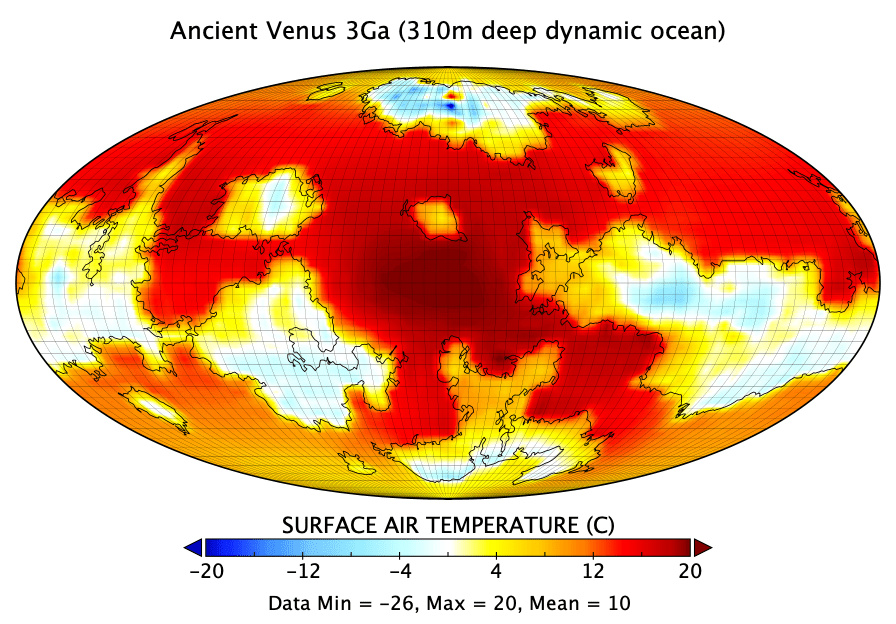
Supercomputers are like computational “time machines,” and scientists use them to explore the past, present, and future universe. Using the NASA Center for Climate Simulation’s Discover supercomputer and the ROCKE-3D computer model, scientists from NASA’s Goddard Institute for Space Studies in New York are simulating the climates of planets inside and outside our solar system. These simulations show that three billion years ago, Venus, Earth’s closest planetary neighbor, may have been temperate long enough to have an ocean – making Venus possibly the first habitable world in our solar system.
Farther from Earth, running ROCKE-3D with ocean characteristics more realistic than in previous models, scientists found that extrasolar world Proxima Centauri b is more habitable than previously believed.
Closer to home, simulations of the Moon reveal that water released by ancient volcanoes closer to the lunar equator can find its way to permanently shadowed polar regions, where we could potentially use it for future exploration.
For more information about NASA’s virtual exhibit at the International Conference for High Performance Computing, Networking, Storage and Analysis, visit: https://www.nas.nasa.gov/sc22
For more information about supercomputers run by NASA’s High-End Computing Program, visit: https://hec.nasa.gov/
Secrets of Sunspots and Solar Magnetic Fields Investigated in NASA Supercomputing Simulations
by Frank Tavares
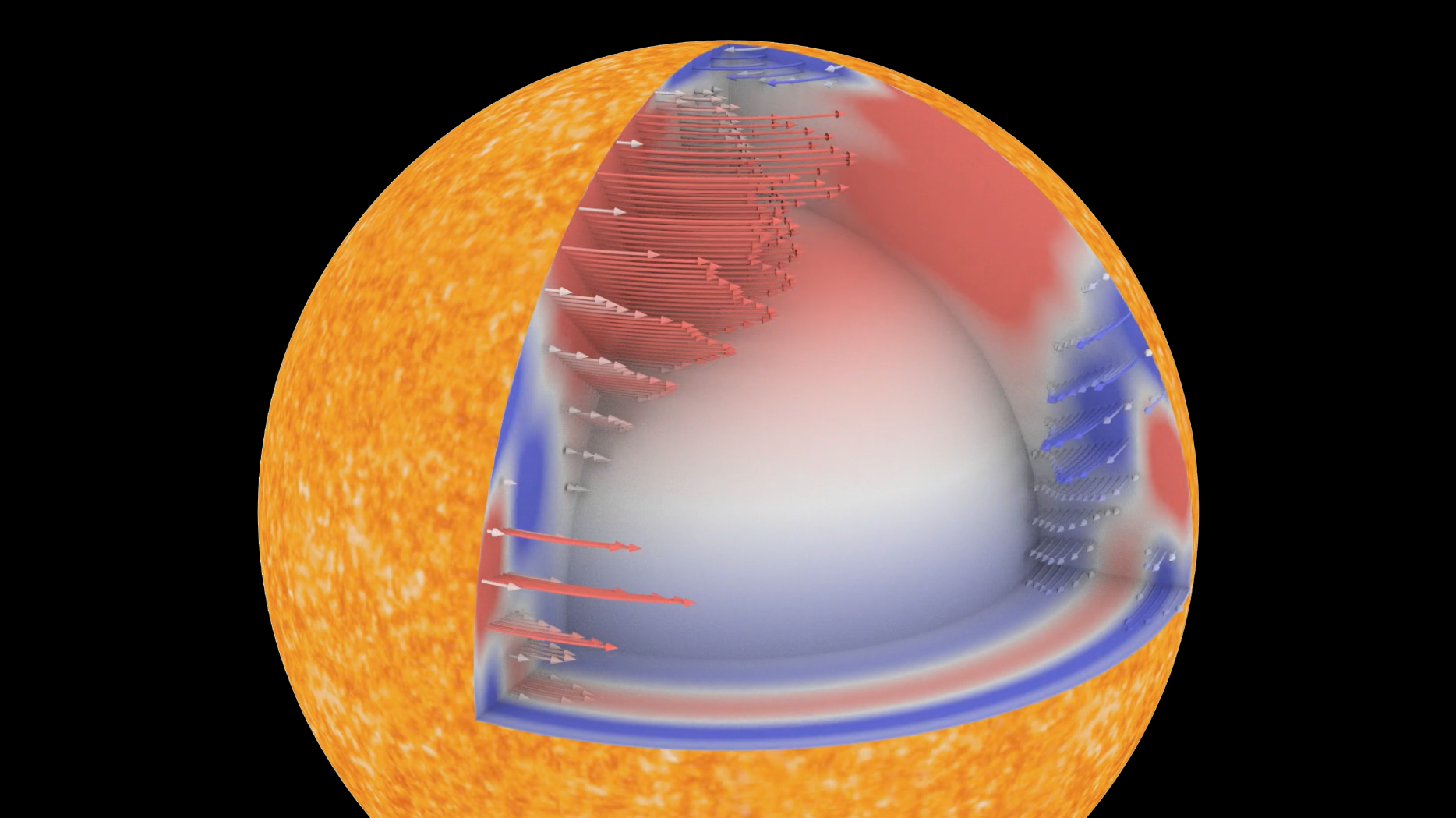
The Sun is much more than just a source of light for Earth – it’s a dynamic and complex star, with storms, flares, and movement causing it to change constantly. Magnetic fields govern most of the solar activity we can observe but how they do this is still poorly understood. New results based on simulations out of NASA’s Advanced Supercomputing facility at NASA’s Ames Research Center in California’s Silicon Valley are painting a more complete picture of one of the most prominent magnetically-driven solar features – a cycle of sunspot formation known as a “torsional oscillation.”
A computational analysis of data about the Sun’s structure and dynamics from two NASA spacecraft has revealed the strength of these torsional oscillations driven by the magnetic fields in the deep interior of the Sun are continuing to decline. This indicates that the current sunspot cycle may be weaker than the previous one, and the long-term trend of declining magnetic fields of the Sun is likely to continue. Such changes in the Sun’s interior may have impacts on space weather and the Earth’s atmosphere and climate.
The sunspot cycle begins when a sunspot begins to form at about 30 degrees latitude on the Sun’s surface. The formation zone then begins to migrate towards the equator. At its peak intensity, the Sun’s global magnetic field has its polar regions reversed – as if there were a positive and negative end of a magnet at each of the Sun’s poles, and they were switched. These 22-year variations are caused by dynamo processes inside the Sun. A dynamo process is when rotating, convecting, and electrically conducting fluid or plasma helps maintain a magnetic field. These deep magnetic fields are hidden, and can’t be observed directly, but their effects can be seen in the variations of solar rotation, creating a cyclical pattern of migrating flows across zones – the torsional oscillations. In some areas, this rotation speeds up or slows down, while in others it remains steady.
This analysis used data from two NASA missions, the Solar and Heliospheric Observatory and the Solar Dynamics Observatory. The Joint Science Operations Center at Stanford University processed data from 22 years of observations from both missions – more than five petabytes in total. NASA’s supercomputing facilities handled flow analysis, numerical modeling, and visualization that gave scientists a better look at this complex pattern.
Going forward, improvements to the data’s resolution, data analysis techniques, and simulation models will help merge models of the Sun’s magnetic fields with those of sunspot activity, advancing the understanding of how these processes impact the Sun’s deep interior. What happens with the Sun, including the processes beneath its surface, affects the space weather that impacts the entire solar system, including Earth. The more we know about the star that lights our home, the better we can understand its impacts on our home planet.
NASA Space Biology Bootcamp Teaches the Teachers, Reaching More Students
by Abigail Tabor
When a team of NASA researchers set out to help train a diverse new generation of space biologists, they wanted to magnify their impact on today’s students. So, they decided to teach the teachers.
Studying biology in space has benefits for both future astronauts and everyday patients on Earth. But it’s challenging to explore the workings of health and disease in the extreme environment of space. The more people with different perspectives focused on it, the better.
The first edition of NASA’s new space biology bootcamp took place in June, when 10 educators from Historically Black Colleges and Universities (HBCUs) and Minority Serving Institutions (MSIs) went “back to school.”
For 10 days, NASA scientists taught them the basics of space biology, designing an experiment, and the technology used for collecting data. They also gave educators hands-on instruction using a web-based, interactive computing platform to analyze real data from GeneLab – NASA’s unique repository of space biology data, managed by the agency’s Ames Research Center in California’s Silicon Valley.
GeneLab is a treasure trove of information, containing data from space biology experiments involving species from bacteria and fruit flies to mice and human cells. These studies, conducted previously aboard the space shuttle and, today, on the International Space Station, explore the effects of exposure to microgravity, radiation, and other aspects of the space environment. The data housed in GeneLab is open access – it’s available to all – but it can’t do much unless someone knows how to use it.
That is what motivated the NASA team to provide training in bioinformatics under the GeneLab for Colleges and Universities initiative. Bioinformatics looks at the way we deal with huge amounts of biomolecular data: gathering it, handling it, analyzing it. And the skills covered in the bootcamp are relevant across the biotech and life sciences fields.
In a second key “chapter” of the program, the participating educators learned to run the same bootcamp for students at their home institutions, extending the reach of this initiative to more students. To ensure they can implement the training, NASA will provide the necessary advanced-computing resources through a cloud computing environment. The GeneLab team also will be available to help answer student questions.
“Using real NASA spaceflight data provides an exciting way to deliver complex training that will apply to any [similar] data and provide undergraduates with a skillset that is highly marketable in the life sciences,” said Amanda Saravia-Butler, GeneLab’s data processing lead and co-instructor of the bootcamp.
Participants completed surveys before and after the event to assess their knowledge on the subject and how prepared they felt to teach students the same content. The results show the bootcamp was a big success on both fronts.
“I thought [the bootcamp] was really great,” wrote one participant in response to the survey, which was anonymous to encourage honest feedback. “One issue I struggle with is developing material to teach bioinformatics to my students. The material provided here is fantastic and will greatly improve how I teach bioinformatics and the scope of what I’ll be able to teach.”
Another educator wrote: “The ability to run the code and understand it is much more valuable than plug-and-play environments…[which] really pull down the ability of scientists to approach a dataset and make meaningful, groundbreaking impacts.”
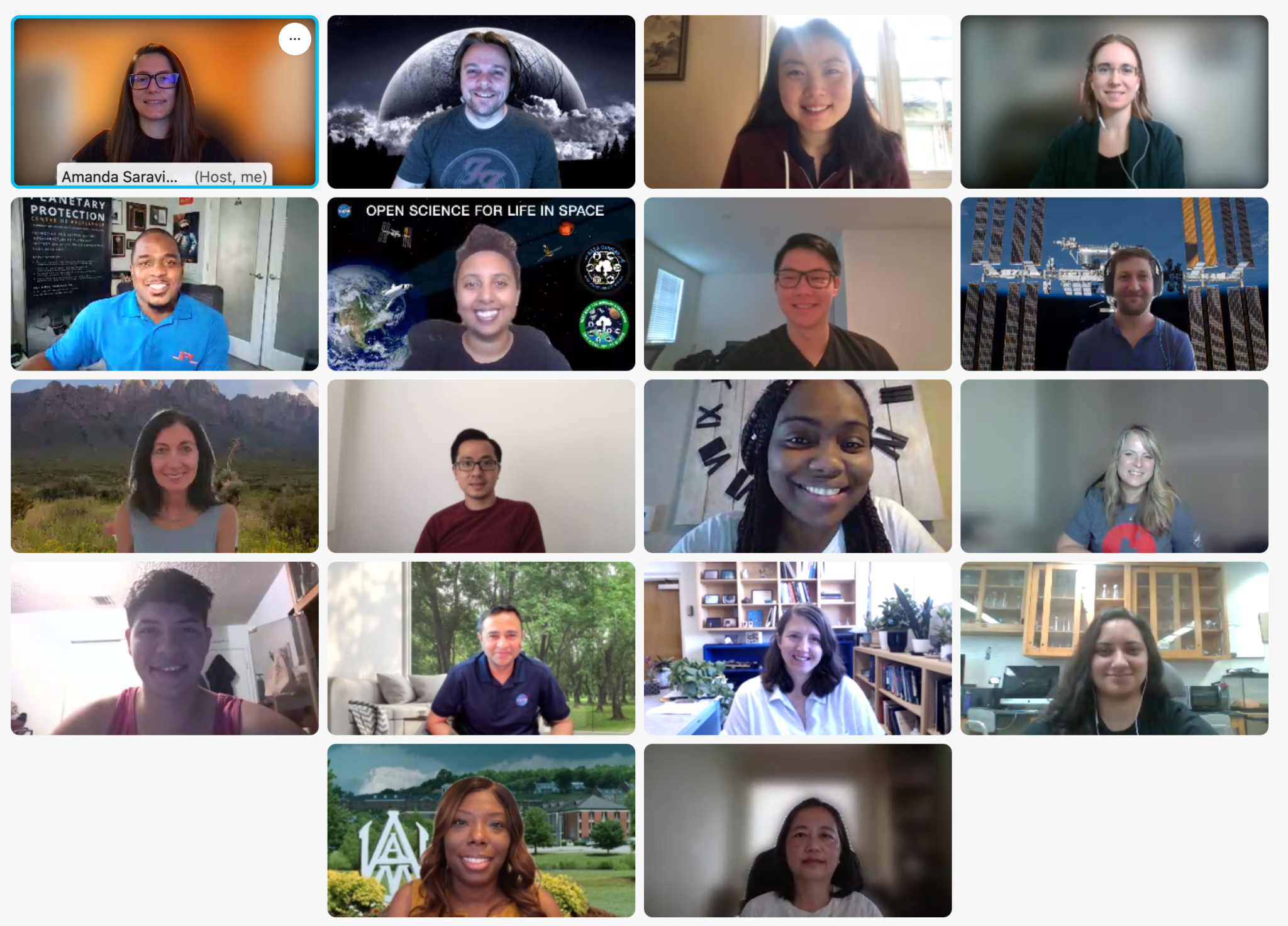
Bootcamp participants are already teaching NASA’s material to bioinformatics students at their home institutions. Going forward, the GeneLab team hopes to offer two trainings in bioinformatics for space biology each year: one for students and one for educators. The next session will take place in summer 2023.
Potential partnerships now being explored with other programs and institutions also could help bring these lessons to additional learners, expanding GeneLab’s impact and getting NASA’s unique data into the hands of even more.
The 2022 pilot edition of the GeneLab for Colleges and Universities (GL4U): RNAseq Educator Bootcamp was created and delivered by the GeneLab team at NASA Ames in collaboration with the Planetary Protection Center of Excellence (PPCoE) VOICES II program at NASA’s Jet Propulsion Laboratory (JPL) in Pasadena, California. The commercial cloud computing platform used was the Science Managed Cloud Environment (SMCE) provided by the Computational and Information Sciences and Technology Office at NASA’s Goddard Space Flight Center in Greenbelt, Maryland. Funding for the bootcamp was provided by the Biological and Physical Sciences Division of NASA’s Science Mission Directorate, with support from JPL’s HBCU initiative for the VOICES II program.
All training materials from the bootcamp are available for download via the program’s GitHub repository, along with links to video recordings of the training: https://github.com/nasa/GeneLab-Training/tree/main/GL4U
HBCU and MSI partner institutions whose educators participated in the training are: California State Polytechnic University in San Luis Obispo, Alabama Agricultural and Mechanical University in Huntsville, California State University-Northridge in Los Angeles, New Mexico State University in Las Cruces, and Monash University in Australia.





























